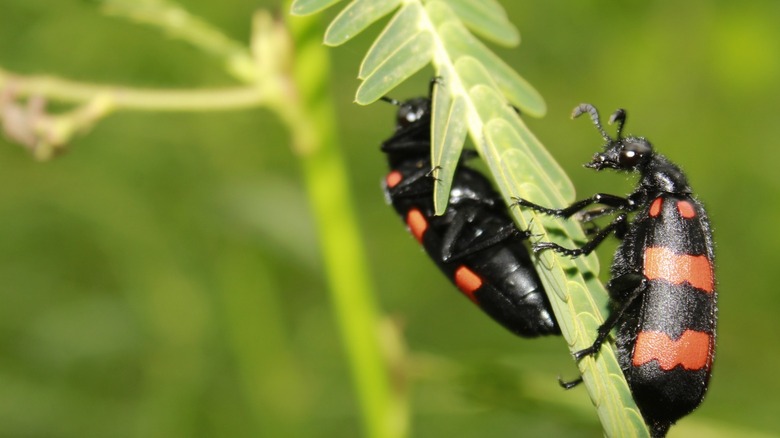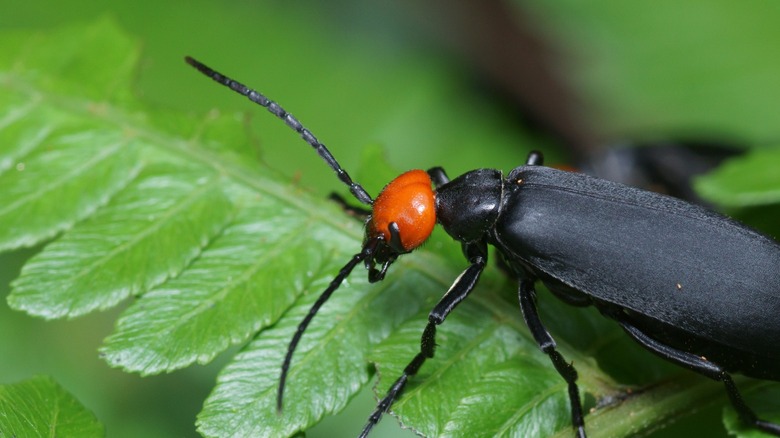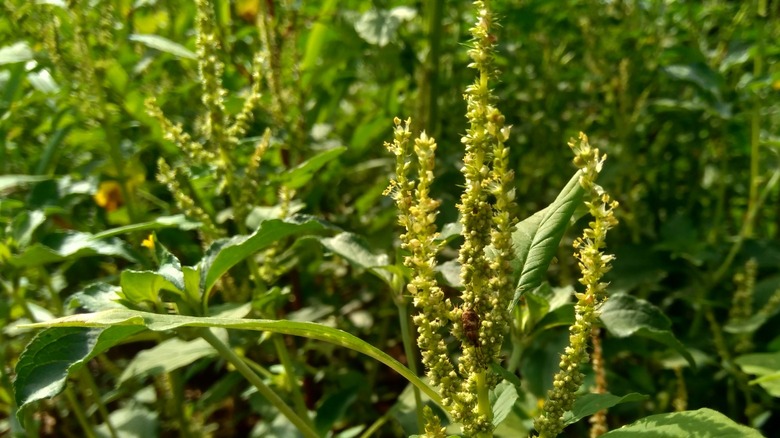Don't Grow This Plant If You Want To Keep Blister Beetles Out Of Your Garden
Beware of the blister beetle! They are nightmarish creatures that only a mother could love. There are around 400 varieties of Coleoptera: Meloidae, better known as the blister beetle, found in North America. These insects produce a toxin called cantharidin in their bodily fluids. Their toxin is potentially deadly to livestock and other animals, and they also destroy everything from flowers to leaf crops. Thankfully, you can help ensure they don't visit your home by avoiding a specific plant that they love.
To keep these destructive insects out of your garden, avoid having pigweed, ragweed, or ironweed growing in your landscape. Pigweed, in particular, tends to be irresistible to adult blister beetles. Gardeners everywhere are advised to completely eradicate these common garden weeds from their property to protect themselves from this destructive insect. With protective gear and vigilance, you can keep these fearsome but interesting beetles from wreaking havoc on your garden.
How to identify blister beetles
The toxin in the blister beetles' bodies is secreted when they are hurt or crushed, but the compound remains active long after. If the fluid comes into contact with a person's skin, it causes severe blistering – hence the nickname. Ingesting these bugs is also toxic and especially dangerous to livestock, such as horses. When they invade field crops like hay, the situation can become devastating. Furthermore, they are voracious and gregarious, eating nearly everything that can be grown in a garden.
Since these insects come in large numbers, look for them in clusters, particularly around the edges of crop fields or gardens. They measure between half an inch to 1 inch in length, have long, soft bodies, and wide heads with long antennae, and come in various colors due to the many different species. Although they go through several stages, the adult stage is the most problematic. Besides eating almost anything, their preferred food is pigweed. If there is any pigweed growing in your yard, it is advisable to get rid of it as soon as possible – and spread the word.
How to control blister beetles
Amaranthus retroflexus, also known as pigweed, is considered a valuable food crop in other countries, but it is often viewed as a problematic weed in the USA. It has even developed resistance to weed killers like Roundup. If you have a garden or crops to care for, you have likely encountered this weed. Unfortunately, all plants in the Amaranth family are particularly attractive to blister beetles. Therefore, removing pigweed, ironweed, and ragweed from your landscape is the first step in controlling the beetles.
Next, you need to get rid of grasshoppers, as blister beetles also love grasshopper eggs. Denying them their favored food sources is the most effective way to keep blister beetles out of your garden. If you find these bugs on any plants, you can knock them off and they will play dead in the dirt. You can then pick them up with protective gear and deposit them in a container of dish soap and water. Always wear gloves when dealing with blister beetles.


